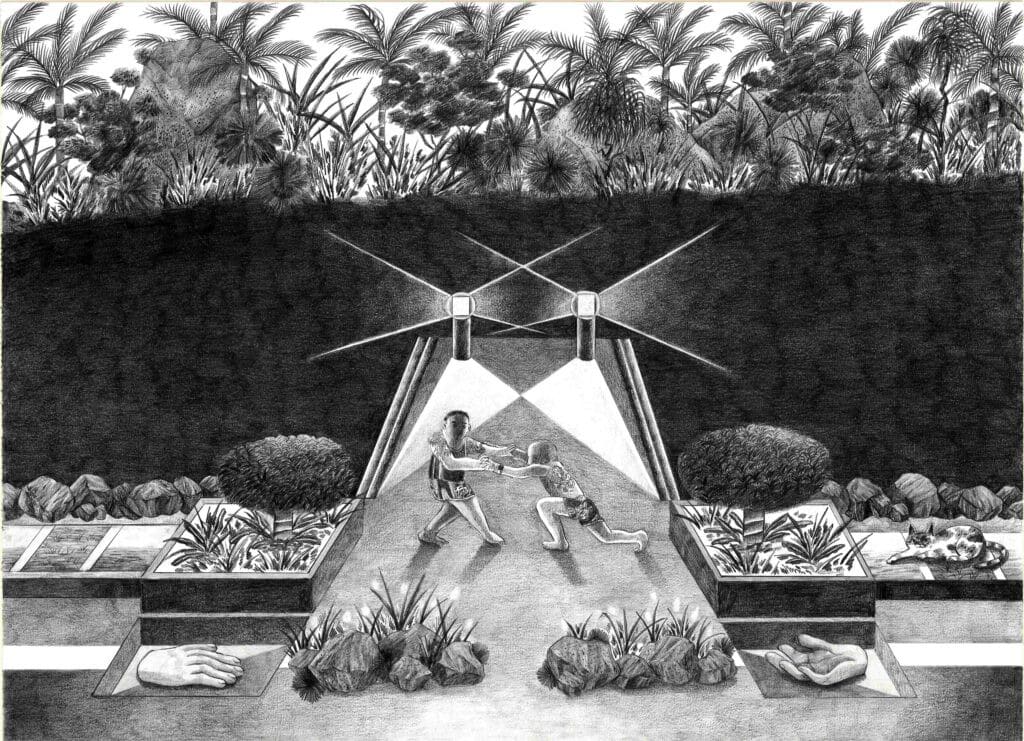
EVENT DESCRIPTION
MM Yu has a fine arts degree and a successful career in painting; at the same time, she is a compulsive photographer, obsessed with the camera since her primary school days. In school, Yu was a student of the late Roberto Chabet who was seen as one of the pillars of Philippine conceptualism, but she also harboured dreams of being a photojournalist in her younger years. More so than some of the career photographers who wait patiently for assignments, Yu is always seen out and about with her camera, snapping away at things that catch her eyes or trigger her memories, just like a street or documentary photographer. Since 1997, Yu has been taking photographs to “remember and grasp what has become unreachable”. However, her photographs are most often seen in the context of contemporary art, rather than editorial work. Over the years, Yu’s photographs have become her collated thoughts and memories, which she trawls and categorises for her different exhibitions in photography. The same photographs reappear in different contexts, taking on new connotations. When photography becomes such an obsession, it inevitably takes an autobiographical slant, marking Yu’s presence at a particular time and place.
Born in Manila, Yu is of Chinese ancestry; her command of Tagalog and Hokkien is more natural than her English. The paternal side of her family is Buddhist while the maternal side is strongly Protestant, which often forbade her from using joss sticks. Growing up, Yu detested the random kids who made fun of her slitted eyes. In despair, she thought of “going back” to China where she would presumably blend in more easily; luckily, she quickly grew out of her naivety. When she entered art school in 1997, her Chinese relatives predicted an impoverished future. To them, Yu was too Filipino; in the broader Philippine society, Yu looked too Chinese. In life and in her artmaking, Yu always seems to be slightly out-of-place.
In this exhibition, Yu revisits the different projects and images that she has made since 1997, imbuing some of them with new possibilities, as she unpacks her sense of Chineseness. Not surprisingly, she approaches the issue with distance and ambivalence. The exhibition unfolds in two trajectories. The first trajectory consists of works that concern her personal and family life, including Recollections (2000-01 / 2024), Then (Grandma’s house) (2022) and four single images. Yu documents people, events and objects that have an emotional connection to her, but the “cold machine” of the camera also flattens the relationships and turns the images into jumbled fragments that resemble the puzzle of her sense of place. These fragments allow Yu the possibility of illusion, to rearrange them in place, or to make them even more jumbled up.
Growing up, Yu used to live with her paternal family at Navotas, near the piers of Manila. She remembers seeing mountains of white sand kept in a storage space. Later, she realised that it was MSG, a food item stereotypically associated with the Filipino Chinese. Her paternal grandparents were initially involved in the production and trading of MSG. Every Sunday, Yu’s family would go to her maternal grandmother’s house at Paco and have lumpia there. When they moved into a condo at Quezon City around 2001, many of their belongings, including her early paintings, were packed into boxes and stored at her maternal grandma’s house. In fact, her place at Paco had always housed the belongings from different generations of Yu’s extended family. When grandma passed in 2002, the caretaker continued to look after the house for more than a decade. At some point after she had returned to the provinces for retirement, burglars broke into the house, ransacked it and even lived in it for some time. In 2022, before it was finally sold, Yu revisited the place and shot Then (Grandma’s House). Reviewing her images, Yu realises that the ransacked objects form a genealogy of her extended family in which the connections and narratives have become almost unrecognisable. Documenting the house and its objects becomes an act of retrieval, of saving these memories and thoughts before they completely disappear.
The second trajectory of the exhibition unpacks the effects of Chinese migration to the Philippines. Works like Inventory (2003-ongoing) and A Few of My Favourite Things (2010) highlight the unmistakeable appeal of China-made products to the Philippine masses who are drawn to these objects partly because of their pricing. At the same time, these products, once discarded, aggravate the issue of wastage and environmental degradation in the Philippines. In Tracings (2024), Yu attempts a collective, surrogate biography by photographing second- and third-generation Chinese Filipinos in a straight-up manner. The unadorned nature of the Instax portraits flattens the identity of the sitters and makes them anonymous to most viewers. While some of them look more “Chinese” than the rest, the desire to identify them this way tells us more about the desires of the audience, rather than the embodied ways in which the sitters experience their different identities.
You may also like
Leave a Reply Cancel reply
You must be logged in to post a comment.


